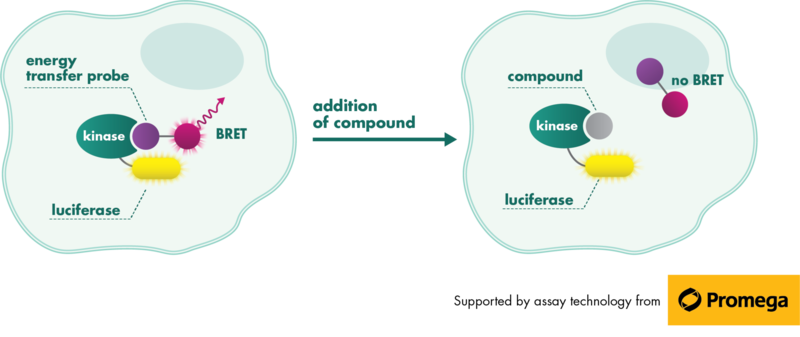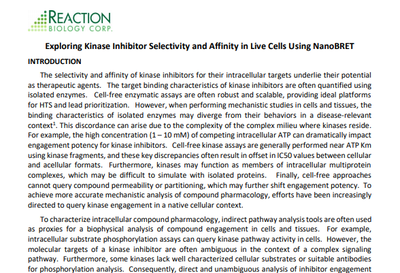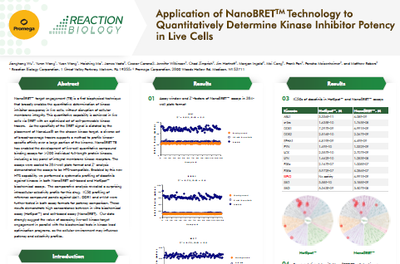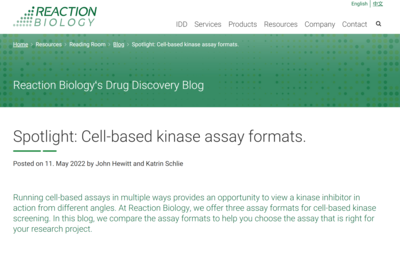NanoBRET Assay Services
Reaction Biology is offering NanoBRET target engagement kinase assays in collaboration with Promega. The intracellular NanoBRET Intracellular Kinase Assay measures the compound binding of select target kinases in intact cells and is one of two cell-based kinase assays we offer besides the Cellular Phosphorylation Assay.
The NanoBRET target engagement assay employs an energy transfer technique designed to measure molecular proximity in living cells. The assay measures the apparent affinity of test compounds by competitive displacement of the NanoBRET tracer, reversibly bound to a NanoLuc luciferase-kinase fusion construct in cells. The intracellular binding affinity and selectivity are physiologically relevant and fundamental to the pharmacological mechanism of the compounds. While biochemical and biophysical assays identify the kinase inhibitors in vitro, the NanoBRET target engagement assay serves as a great tool to determine the direct interaction of the compounds binding to target kinases in cells.
- The NanoBRET assay provides real-time data of the binding affinity of a compound to kinase target including occupancy time
- Intact cells provide a relevant environment for the compound-kinase interaction in regards of ion and ATP concentration, pH, or co-factors. In addition, to function inside the cell, compounds must overcome the cellular membrane.
- Suitable for high-throughput screening
- Kinase activity testing in intact cells can be investigated with our Cellular Phosphorylation Assay









